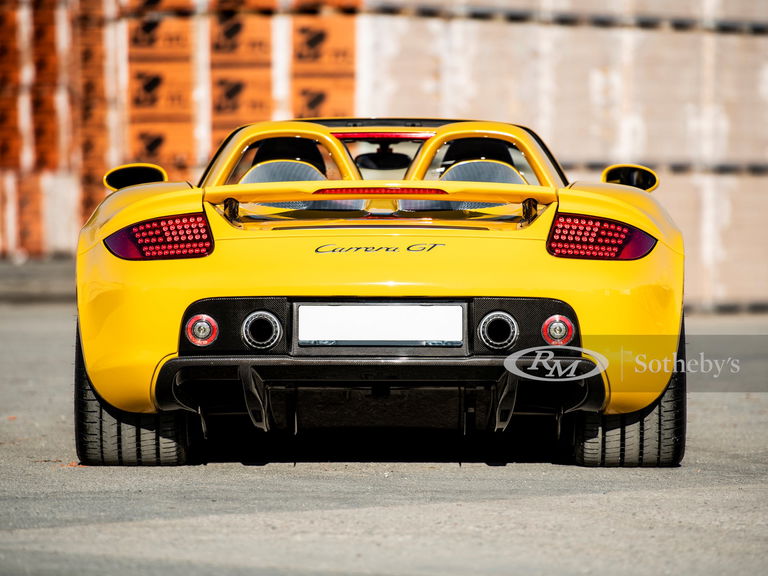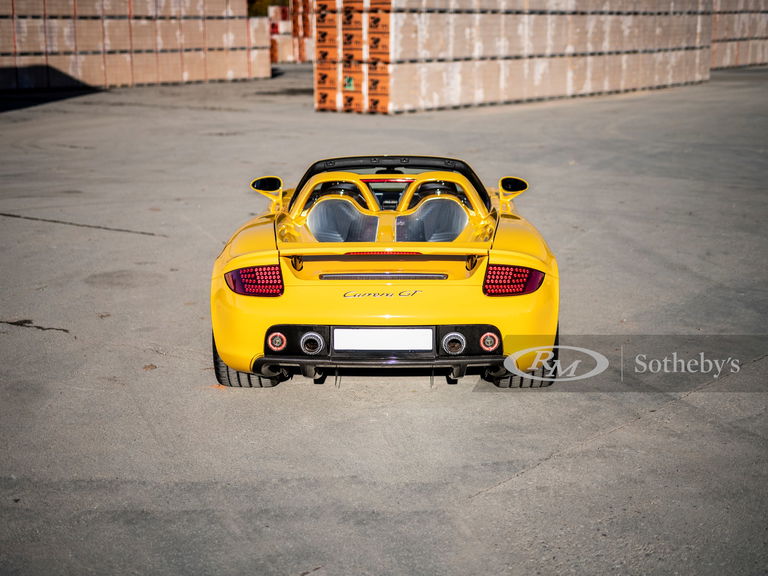Hot on the heels of Porsche’s success at the 24 Hours of Le Mans with the 911 GT1, Porsche’s engineers had their sights on the future at the fabled race, focusing on a new prototype for the LMP98 program. Rather than going their traditional route with a 911 based flat six-cylinder turbocharged engine, Porsche chose to go a slightly different route. They had developed a naturally-aspirated wide-angle V-10 engine in secret, which was intended to be used by the stillborn Footwork Arrows Formula 1 project. When the FIA cancelled the Le Mans Prototype class in 1999, Porsche decided to revise the platform for road use, hoping to recoup some of their costs from the project.
Dubbed the Carrera GT, this new road car was underpinned by a Porsche’s first monocoque chassis, which utilized an engine support unit of CFP (carbon fibre/reinforced plastic) with steel bracing around the windshield and passenger compartment. Chassis construction was sublet to Italian aerospace component maker ATR Composites. At its heart was the aforementioned V-10, displacing 5.7-litres and producing an incredible 605 bhp at 8,000 rpm and 435 foot-pounds of torque at 5,750 rpm. To keep the car’s center of gravity as low as possible, the engine employed dry-sump lubrication, and both the flywheel and multi-disc carbon-ceramic clutch were barely 6.5 inches in diameter. Managing this power was a six-speed manual transaxle with a limited slip differential.
Despite the car’s exceptional performance credentials, these could not change the fact that both the global economy and Porsche were struggling financially. Engineers in Stuttgart shifted their attention to the new Cayenne SUV, which proved to be massively successful and brought about the capital needed to resume producing the Carrera GT. Formally appearing at the Geneva Motor Show in 2003, interest was strong from the start. One thousand, two hundred and seventy cars were built with production beginning in 2004. Of those, approximately 644 were designated for the U.S. market, including the example offered here.
Born as a U.S. specification example, this particular Carrera GT is finished in attractive Fayence Yellow over a Dark Grey leather interior. It was shipped to its first owner in the U.S. in late 2004 and delivered in October of that year. According to the car’s accompanying CARFAX report, the Carrera GT was initially delivered to Utah where it remained through 2005, before moving to Florida in 2006. The car remained in Florida until at least 2009, with its last registered mileage on the CARFAX report showing 6,952 miles (11,188 km) as of July 28, 2008 and was later exported to Switzerland. A replacement serviced book in French shows three different services, including one at Porsche Centre Lausanne at 14,950 km in September of 2013 and a subsequent service at Porsche Service Zentrum Schinznach-Bad in August of 2016. Most recently, Porsche Service Zentrum Schinznach Bad serviced the car in March of 2020 at 16,327 km.
A mainstay of any Porsche collection, the Carrera GT provides an unrivaled, analog driving experience. Standing out from the crowd due to its wonderful Fayence Yellow paintwork, this example surely would not disappoint on the open road, and is ready to drive and enjoy.




























